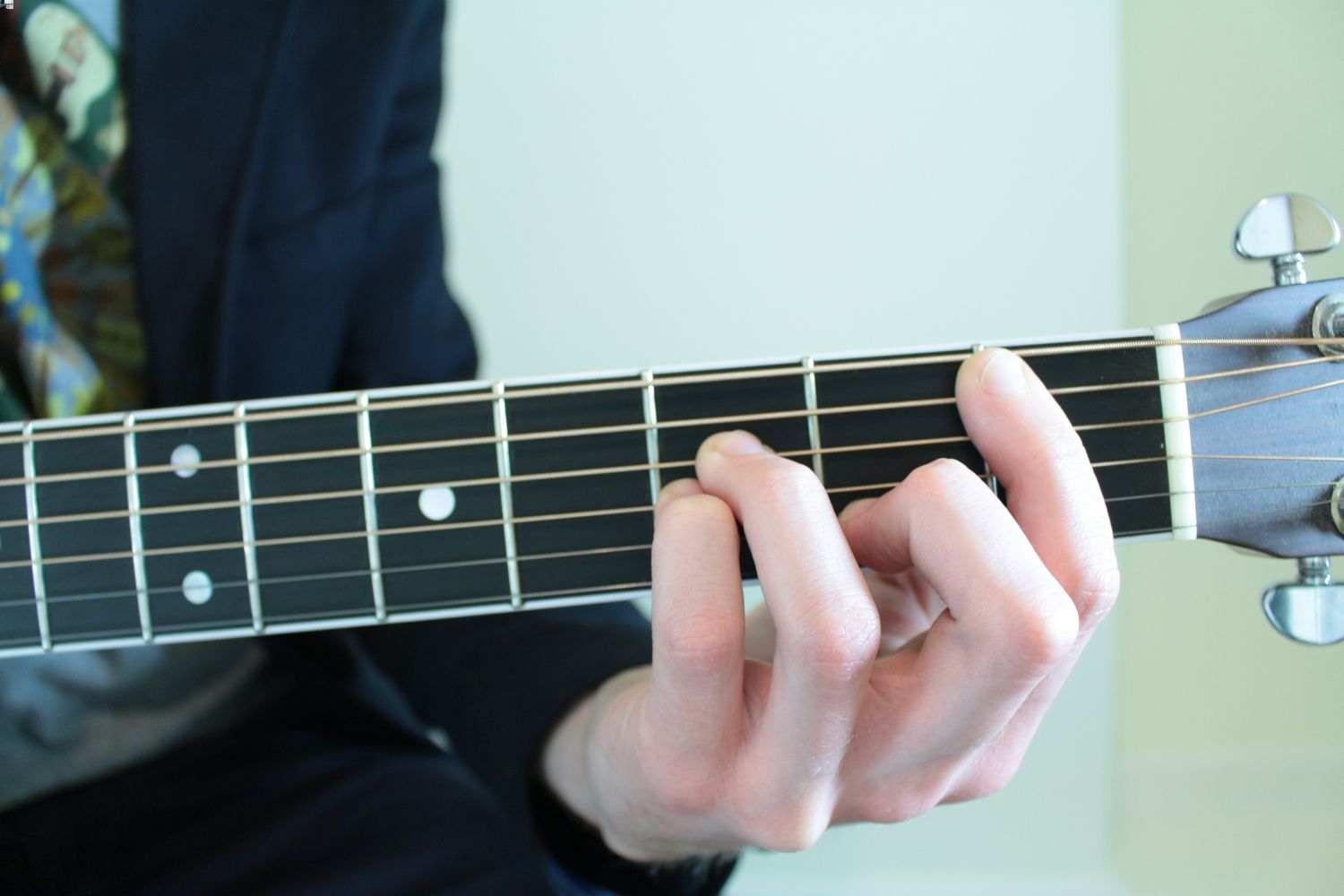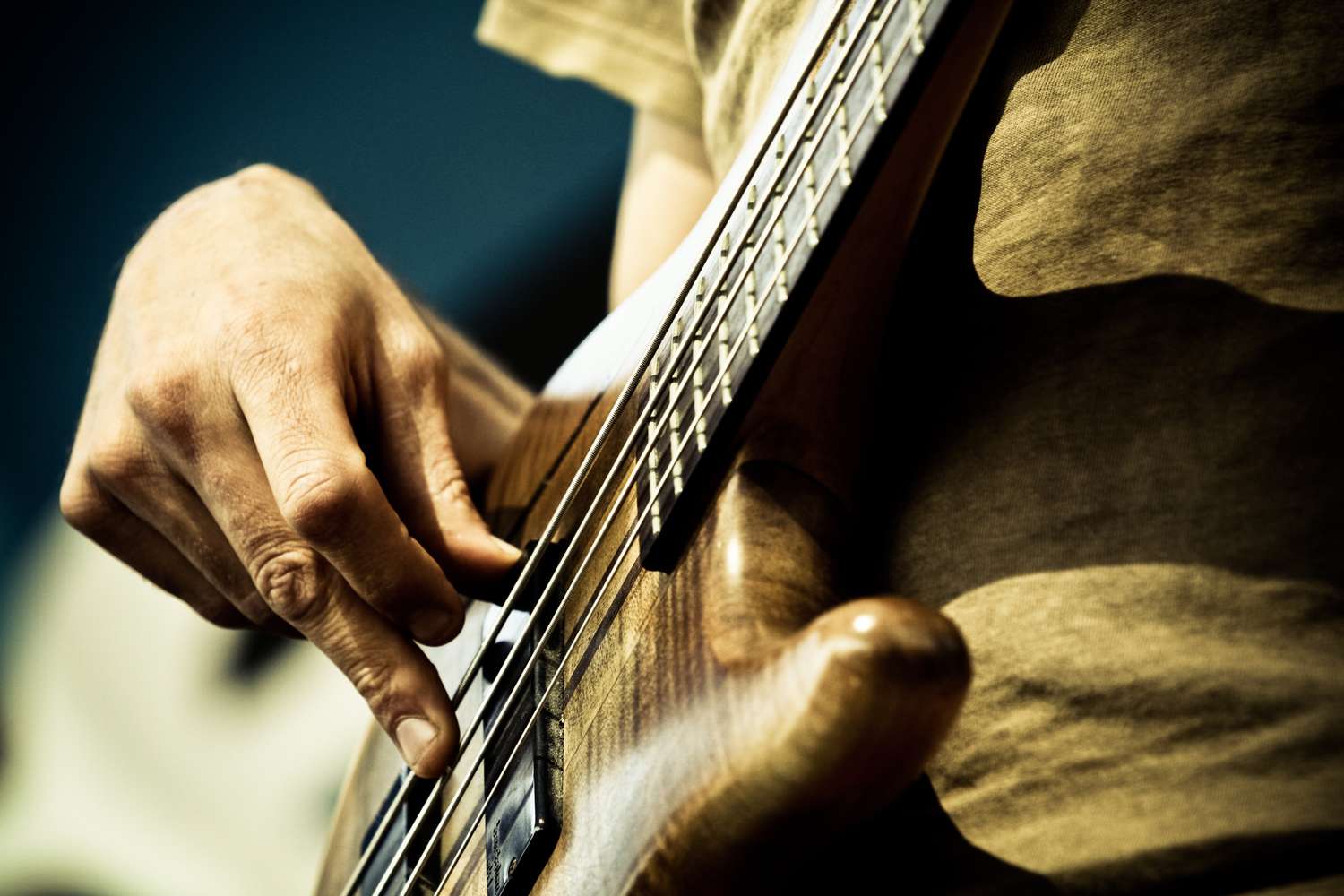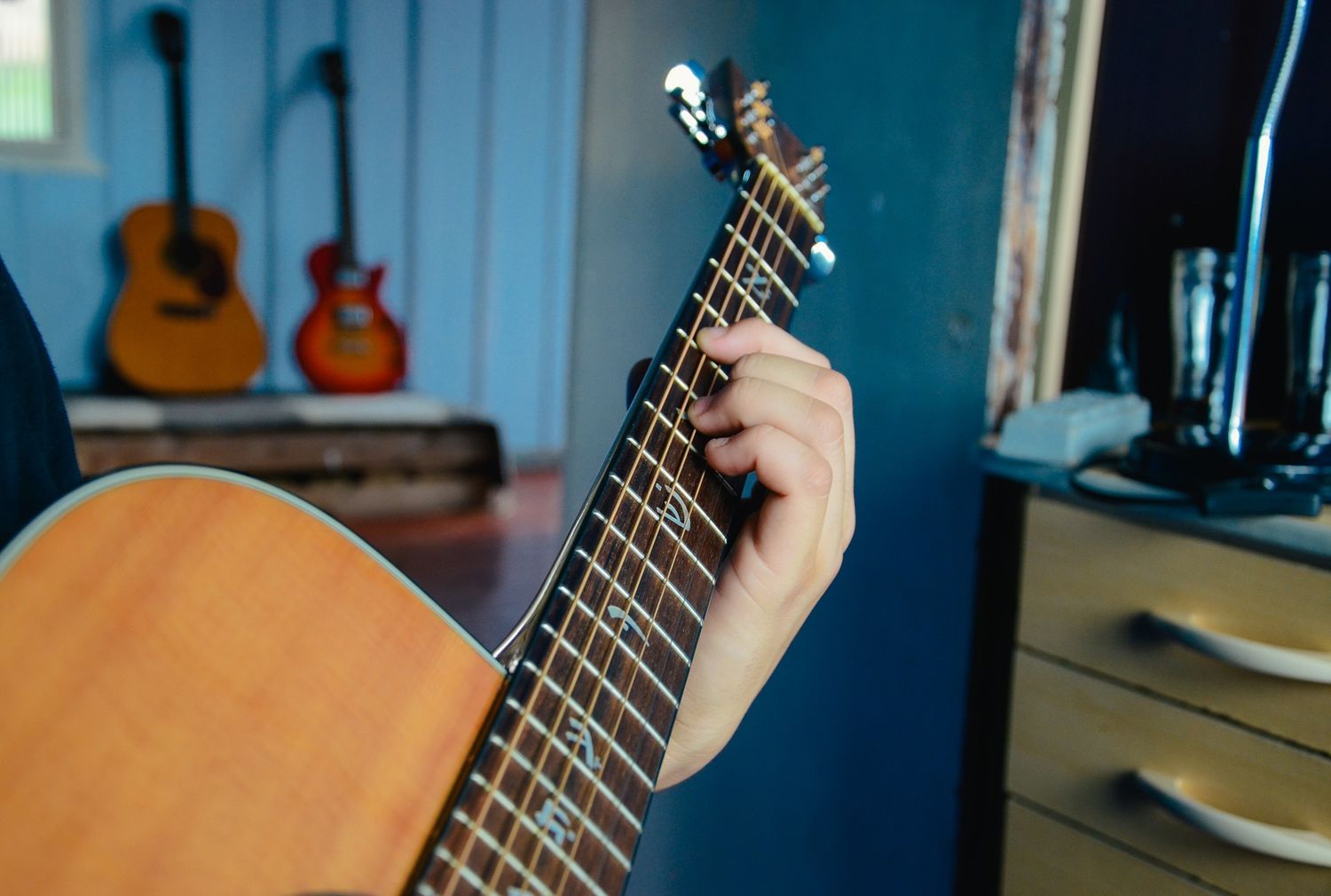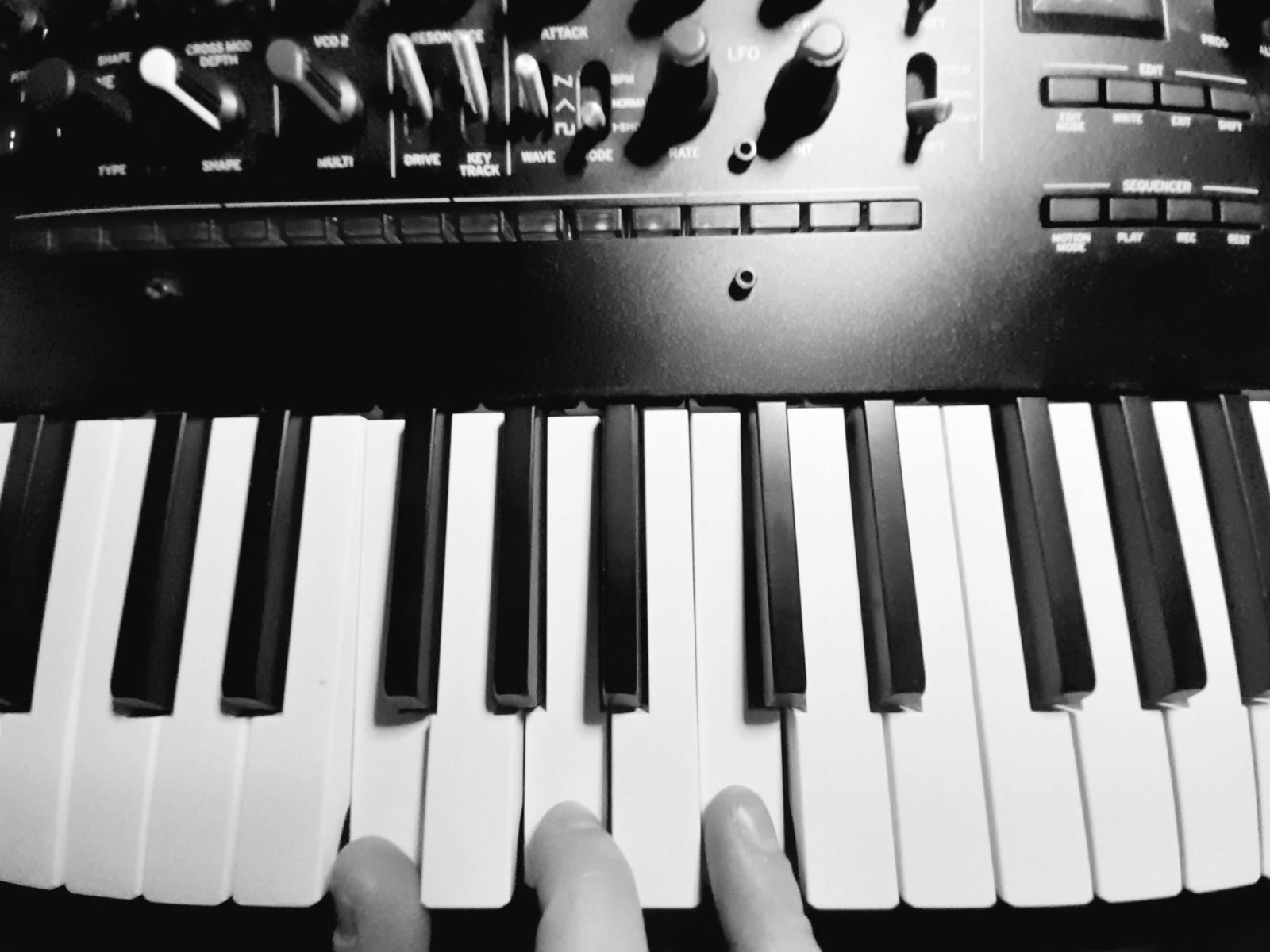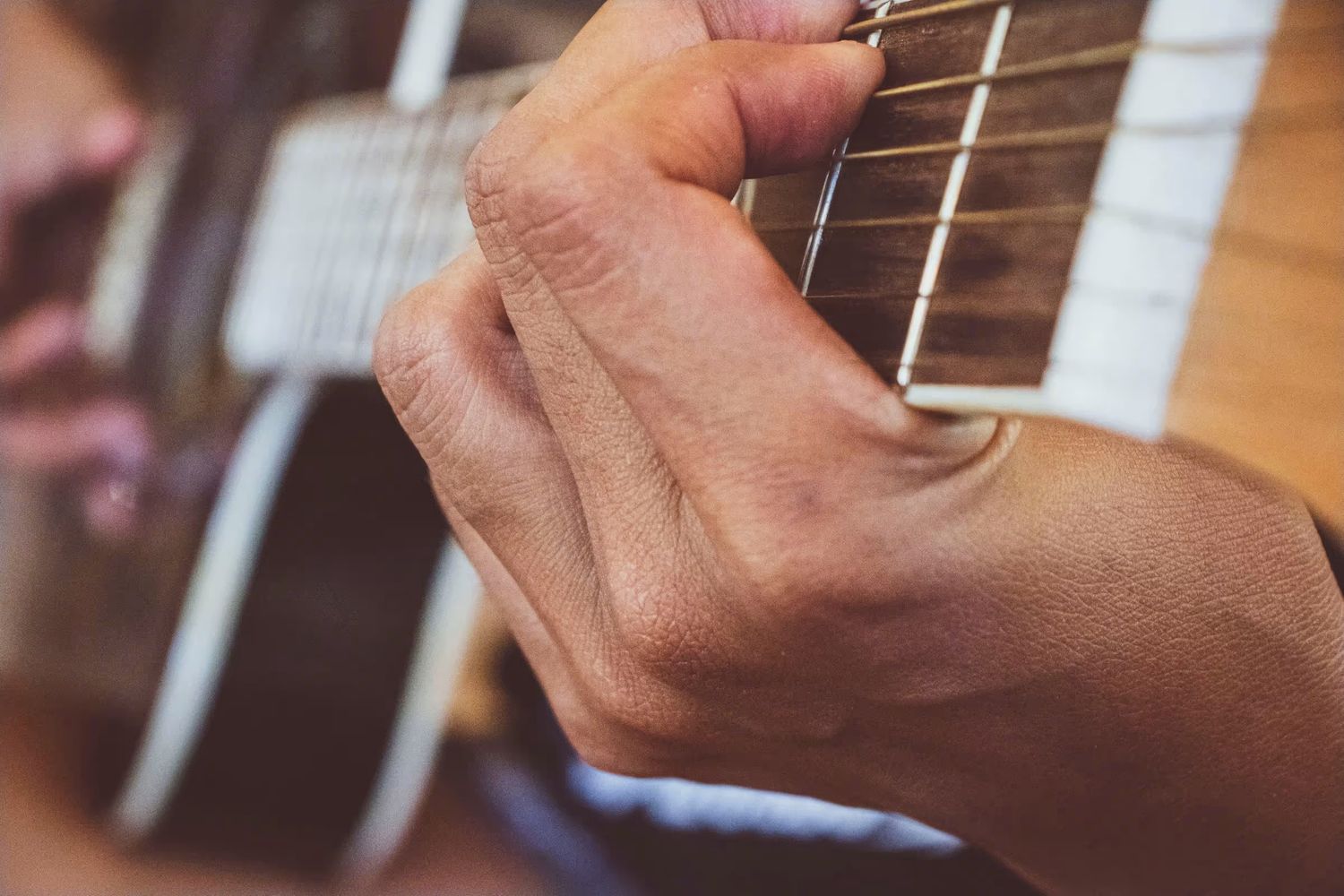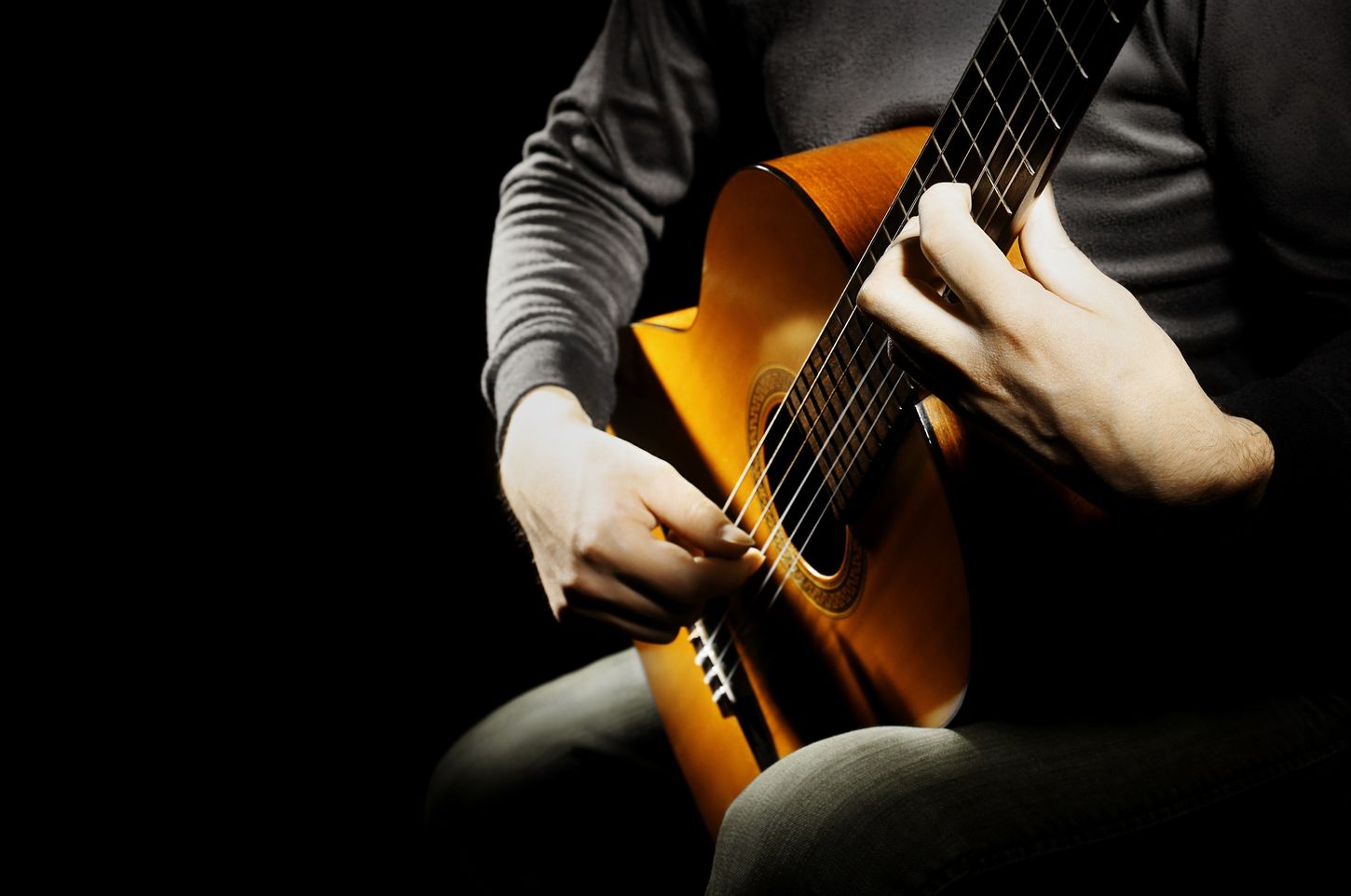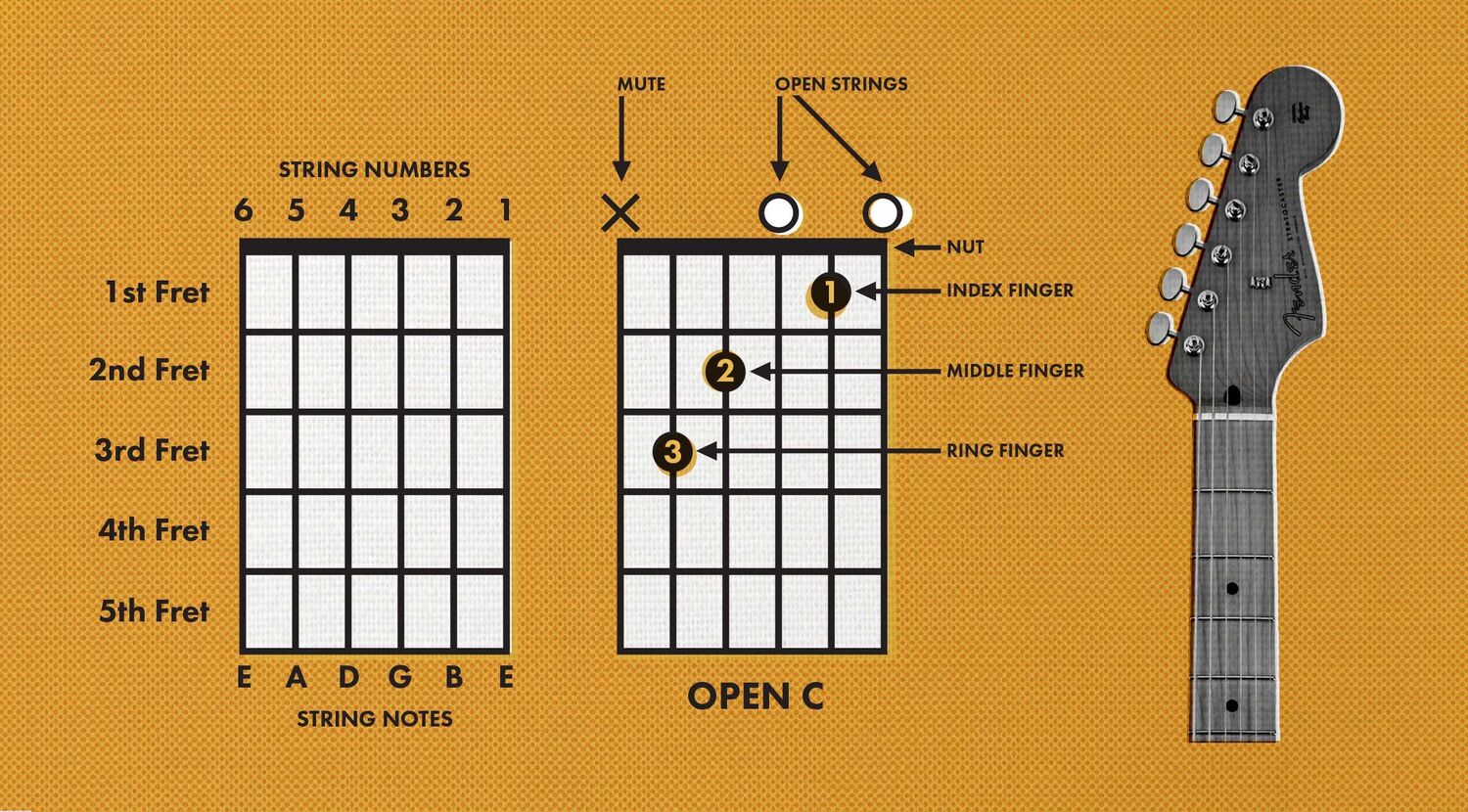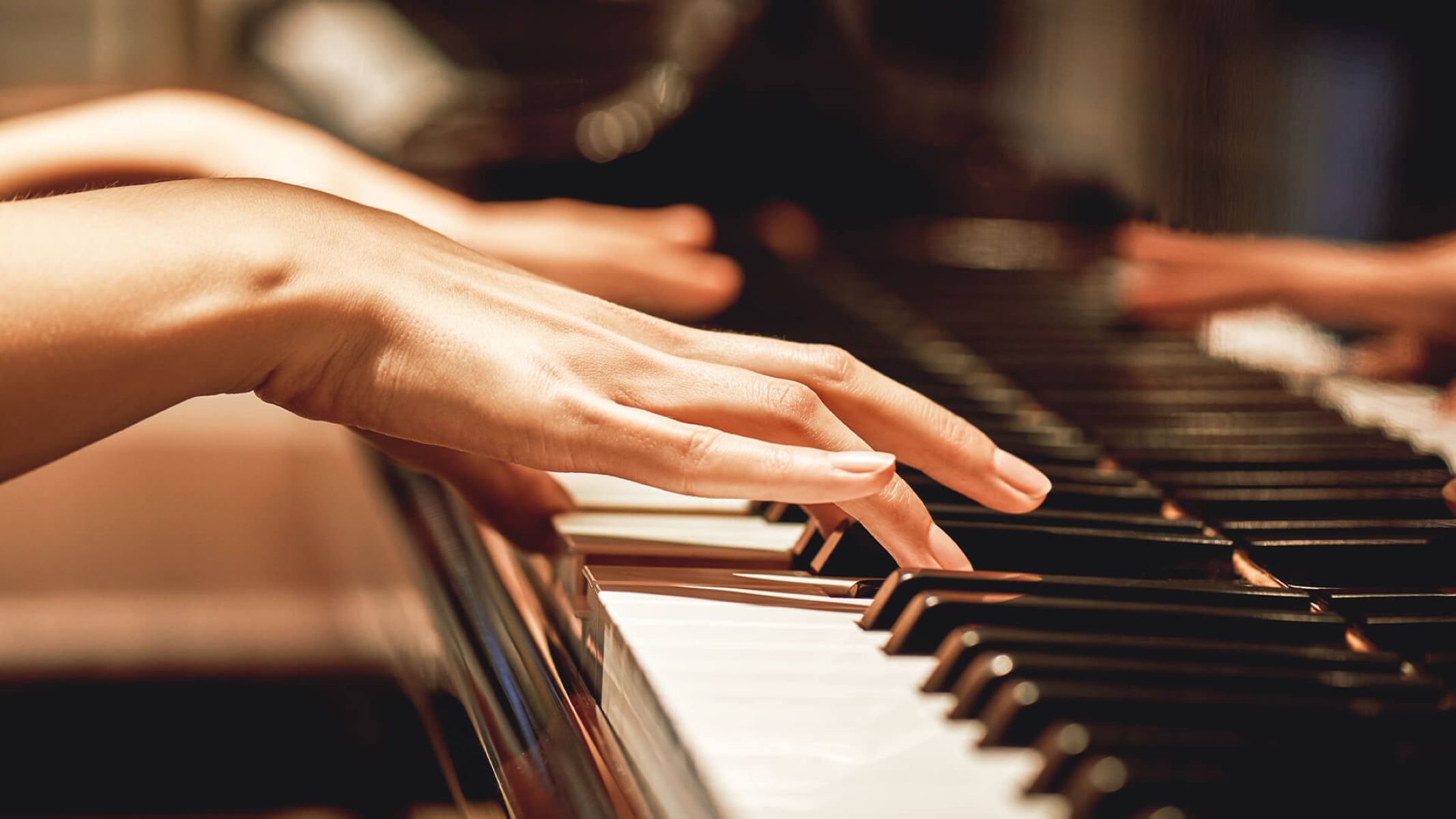Home>Instruments>Guitar>How To Play The B Chord On Guitar
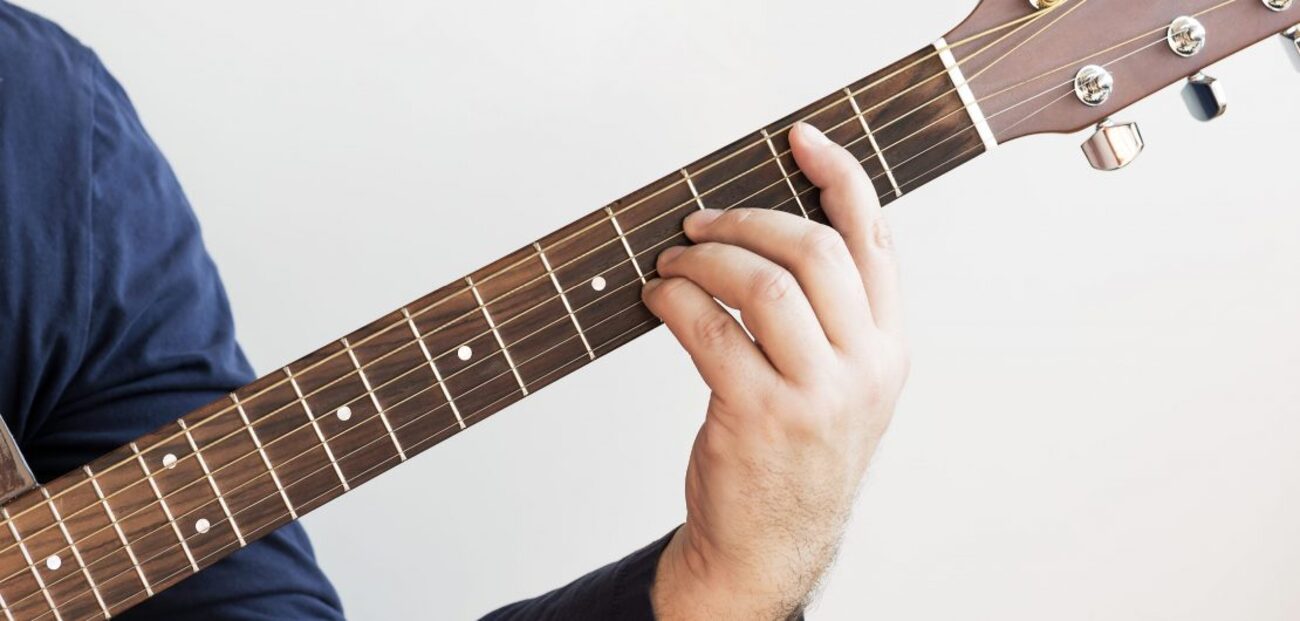

Guitar
How To Play The B Chord On Guitar
Published: February 14, 2024
Learn how to play the B chord on guitar with our step-by-step guide. Master this essential chord and improve your guitar skills today.
(Many of the links in this article redirect to a specific reviewed product. Your purchase of these products through affiliate links helps to generate commission for AudioLover.com, at no extra cost. Learn more)
Table of Contents
Introduction
Learning to play the guitar opens up a world of musical possibilities, and mastering different chords is essential for any aspiring guitarist. The B chord is a fundamental yet challenging chord that is frequently used in various songs across different genres. Understanding how to play the B chord on the guitar is a significant milestone for any guitarist, as it unlocks the potential to play a wide range of songs with its rich and resonant sound.
In this comprehensive guide, we will delve into the intricacies of the B chord, including finger placement, common variations, and tips for mastering this essential chord. Whether you’re a beginner seeking to expand your chord repertoire or an intermediate player aiming to refine your skills, this guide will provide valuable insights to help you navigate the complexities of the B chord.
So, grab your guitar, tune the strings, and let’s embark on a journey to demystify the B chord and elevate your guitar playing to new heights.
Understanding the B Chord
The B chord is a crucial open chord that every guitarist should strive to master. It is commonly used in various musical genres, including pop, rock, folk, and more. The B chord is known for its rich, full-bodied sound, making it a valuable addition to your chord repertoire.
One of the defining characteristics of the B chord is its barre chord form. Unlike many other open chords, the B chord requires the use of a barre, which entails using one finger to press down multiple strings across the fretboard. This technique can be challenging for beginners due to the strength and dexterity required to execute it effectively.
Understanding the structure of the B chord is essential for mastering it. The B chord is composed of the following notes: B, D#, and F#. When strummed together, these notes create a harmonious and resonant sound that adds depth to your playing.
It’s important to note that the B chord can be played in multiple positions along the fretboard, each offering a unique tonal quality. Additionally, the B chord serves as a gateway to learning other barre chords, making it a pivotal chord in the guitarist’s journey.
As you delve into the world of the B chord, you’ll discover its versatility and potential for creative expression. Whether you’re playing gentle acoustic ballads or rocking out with powerful riffs, the B chord brings a distinct character to your music.
Now that we’ve laid the groundwork for understanding the B chord, let’s explore the intricate finger placement required to bring this chord to life on the guitar.
Finger Placement for the B Chord
Mastering the B chord on the guitar requires precise finger placement to achieve a clear and resonant sound. As a barre chord, the B chord demands a specific finger positioning technique that may pose a challenge for beginners. However, with patience and practice, you can develop the dexterity and strength necessary to execute the B chord with confidence.
To play the B chord in its standard form, follow these steps:
- Index Finger: Begin by using your index finger to barre the entire second fret of the guitar, pressing down on all six strings. This forms the foundation of the B chord and requires consistent pressure to ensure that all strings ring out clearly.
- Middle Finger: Next, place your middle finger on the fourth fret of the G string (3rd string). This finger serves to fret the note D#, adding depth to the chord’s harmonic structure.
- Ring Finger: Your ring finger comes into play on the fourth fret of the D string (4th string), fretting the note F#. This completes the triad of notes that define the B chord’s rich tonality.
- Pinky Finger: While the standard B chord does not typically involve the pinky finger, some variations and embellishments may call for its use. Keep your pinky finger poised and ready to adapt to different chord voicings as you progress in your guitar journey.
It’s essential to maintain proper finger curvature and positioning to prevent muted strings and ensure a clean sound. As you press down on the strings, focus on applying even pressure across the fretboard to produce a uniform tone.
Remember that achieving proficiency in playing the B chord may take time, especially as you build finger strength and coordination. Regular practice and mindful finger placement are key to mastering this foundational chord, setting the stage for your growth as a guitarist.
Now that we’ve covered the finger placement for the standard B chord, let’s explore common variations that offer flexibility and creative possibilities in your playing.
Common Variations of the B Chord
While the standard B chord forms the backbone of many songs, there are several variations that offer diverse tonal qualities and ergonomic advantages. Exploring these variations provides valuable options for accommodating different playing styles and musical contexts.
One popular variation is the B7 chord, which introduces a bluesy and soulful vibe to your playing. To play the B7 chord, follow these finger placements:
- Index Finger: Barre the entire second fret as in the standard B chord.
- Middle Finger: Place your middle finger on the third fret of the B string (2nd string).
- Ring Finger: Position your ring finger on the fourth fret of the D string (4th string).
- Pinky Finger: Add your pinky finger to the fourth fret of the high E string (1st string) to complete the B7 chord.
The Bm (B minor) chord is another compelling variation that infuses a melancholic and introspective quality into your chord progressions. To play the Bm chord, use the following finger placement:
- Index Finger: Barre the entire second fret, similar to the standard B chord.
- Ring Finger: Place your ring finger on the fourth fret of the D string (4th string).
- Pinky Finger: Add your pinky finger to the fourth fret of the G string (3rd string).
Additionally, the Bm7 (B minor 7) chord offers a mellow and jazzy sound that can add depth to your chord progressions. To play the Bm7 chord, use the following finger placement:
- Index Finger: Barre the entire second fret, just like the standard B chord.
- Ring Finger: Place your ring finger on the fourth fret of the D string (4th string).
- Pinky Finger: Add your pinky finger to the fourth fret of the high E string (1st string).
Exploring these common variations of the B chord opens up a world of creative possibilities, allowing you to adapt your playing to different musical styles and moods. As you integrate these variations into your repertoire, you’ll enhance your musical expression and versatility as a guitarist.
Now that we’ve explored these variations, let’s delve into valuable tips for mastering the intricacies of the B chord.
Tips for Mastering the B Chord
Mastering the B chord on the guitar is a rewarding yet challenging endeavor that requires dedication and perseverance. To help you navigate the complexities of this essential chord, consider the following tips to refine your technique and elevate your playing:
- Focus on Finger Strength and Dexterity: Building finger strength is crucial for effectively executing the B chord, especially the barre technique. Practice exercises that target finger strength and dexterity to enhance your ability to fret the chord cleanly.
- Optimize Your Barre Technique: Pay close attention to your barre finger’s positioning and pressure. Ensure that your finger is placed squarely across the fretboard, exerting even pressure on all strings to produce clear and resonant notes.
- Use Proper Thumb Placement: Position your thumb correctly behind the neck of the guitar to provide support and leverage for executing the B chord. Avoid gripping the neck too tightly, as this can impede your finger mobility.
- Practice Smooth Chord Transitions: Incorporate the B chord into chord progressions and songs to improve your transition skills. Practice moving to and from the B chord to other chords fluidly, gradually increasing your speed and accuracy.
- Experiment with Different Finger Positions: Explore variations in finger placement to find a comfortable and effective way to fret the B chord. While the standard finger placement is essential to master, experimenting with slight adjustments can help you find a personalized approach that suits your hand anatomy and playing style.
- Patience and Persistence: Learning the B chord may take time, and initial frustrations are normal. Stay patient and persistent in your practice routine, acknowledging that gradual improvement leads to mastery.
By incorporating these tips into your practice regimen, you’ll develop a solid foundation for playing the B chord with confidence and proficiency. Embrace the journey of honing your skills, and celebrate the progress you make along the way.
With these insights in mind, you’re well-equipped to embark on your quest to master the B chord and expand your musical horizons as a guitarist.
Conclusion
Congratulations on delving into the intricate world of the B chord on the guitar. Throughout this guide, we’ve explored the significance of the B chord, from its rich tonal qualities to the technical nuances of finger placement and variations. As you continue your musical journey, mastering the B chord will open doors to a myriad of songs and styles, enriching your playing and creative expression.
By understanding the structure and finger placement of the B chord, you’ve gained valuable insights into the foundational elements that shape its resonant sound. Whether you’re tackling the standard B chord, experimenting with variations like B7 and Bm, or honing your technique with mindful practice, each step contributes to your growth as a guitarist.
Remember, the path to mastering the B chord may present challenges, but with dedication and perseverance, you’ll refine your skills and embrace the rewarding feeling of playing this essential chord with confidence. Embrace the journey, celebrate your progress, and stay inspired by the music you create.
As you continue to explore the vast landscape of guitar playing, the knowledge and skills you’ve gained in mastering the B chord will serve as a solid foundation for tackling more advanced chords and musical endeavors. Whether you’re strumming gentle ballads, rocking out with powerful riffs, or delving into intricate melodies, the B chord will remain an integral part of your musical toolkit.
So, pick up your guitar, let the strings resonate with the harmonious sound of the B chord, and embark on a musical adventure filled with creativity, passion, and the joy of playing the guitar.
May your guitar journey be filled with inspiration, growth, and the timeless allure of creating beautiful music. Keep strumming, keep learning, and keep embracing the magic of the B chord and beyond.

